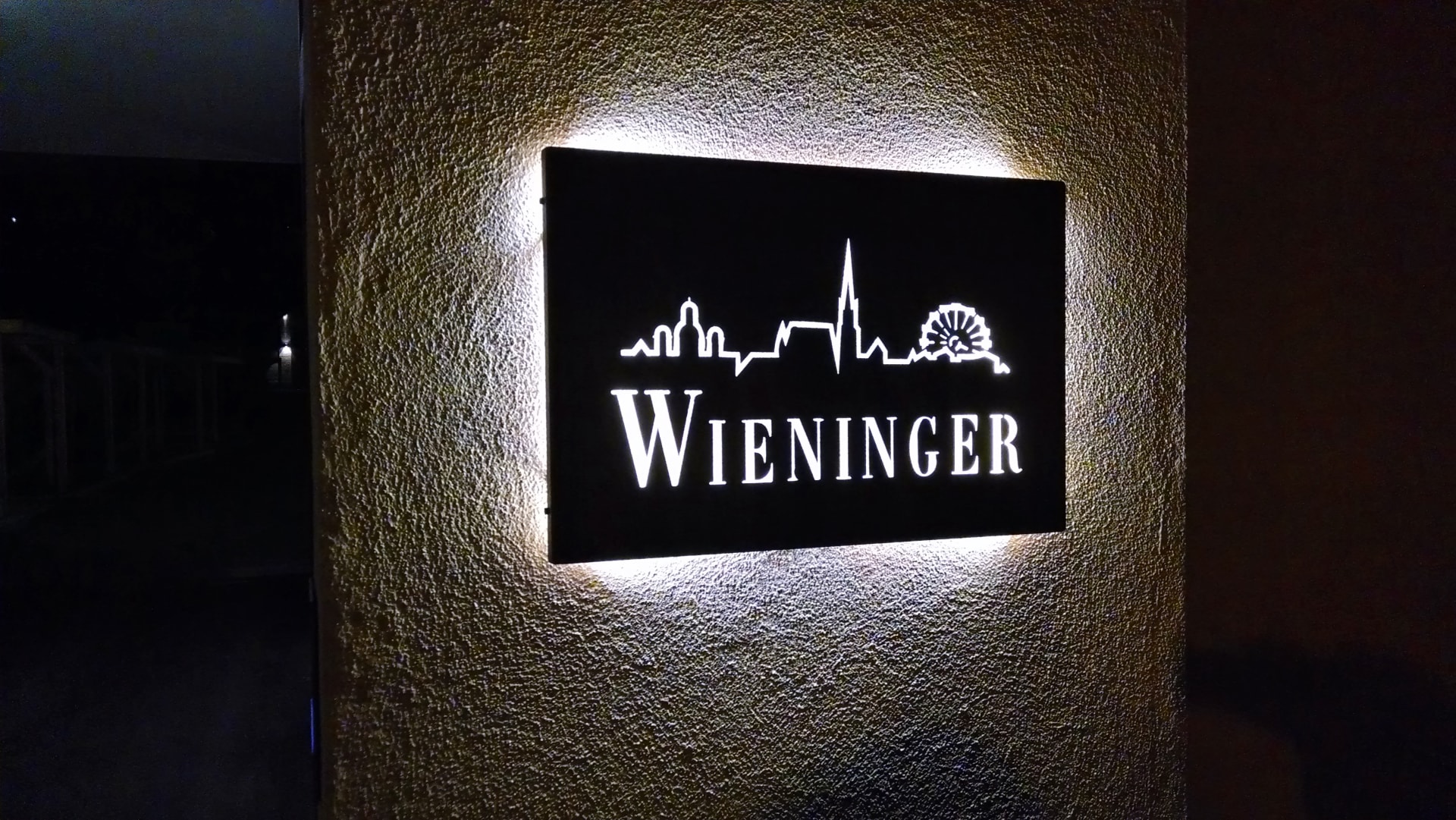Wieninger Wiener Gemischter Satz 2019
-
James
Suckling -
Wine
Enthusiast



Product Details
Your Rating
Somm Note
Winemaker Notes
Because a Gemischter Satz consists of many different varieties harvested at the same time, this dry white wine will include some unripe grapes and some overripe grapes and results in a wide range of aromas and flavors. Lemony citrus notes, herbs and white flowers co-mingle with ripe tropical flavors of melon and pineapple.
Gemischter Satz is the classic wine of the Viennese heurige and is at home with simply prepared foods such as charcuterie, flavored cheese spreads, and dark bread. Fresh acidity and medium weight allow this wine to work well with grilled pork sausages and breaded white fish. Medium-spiced Asian flavors are equally compatible.
Professional Ratings
-
James Suckling
This smells like a whole meadow, filled with wild herbs and flowers! Very concentrated yet also very subtle, this has kaleidoscopic notes of yellow, red and white fruit on the finely etched palate. Very long finish, in which the mineral acidity, fine tannins and ripeness are tightly interwoven. From biodynamically grown grapes with Respekt certification. Drink or hold. Glass closure.
-
Wine Enthusiast
Honeyed richness is carried on the very first whiff. More air then reveals dried apricot, blossom honey and ripe Amalfi lemon zest. The concentrated palate, however, homes in on the zesty part and channels the undoubted richness, almost unctuousness of this wine into fine, clear freshness. This has body and curve, power and concentration but also finesse.
Other Vintages
2021-
James
Suckling
-
Wine
Enthusiast
-
Wine
Enthusiast
-
Wine
Enthusiast
-
Wine &
Spirits








Fritz Wieninger is the leading wine producer in the city of Vienna and is a champion of Gemischter Satz (Geh-mish-ter Sah-ts), a traditional field blend and a favorite wine in Vienna's heurigen (wine taverns). There are over 600 hectares of vines within Vienna making it Europe’s only capital city also demarcated as a wine appellation. The Wieninger winery is in the 21st district on the outskirts of Vienna, home to many of the city’s heurigen and home to the famed Bisamberg hill where the Romans once cultivated the vine. Wieninger is a member of the vintner's association Österreichische Traditionsweingüter and a member of Respekt, a certifying body for biodynamic viticulture in Austria. Most of Vienna’s vineyards are in the 19th and 21st of the city’s 23 districts on opposite sides of the Danube river. The Bisamberg area, located in the 21st, has sandy loess over limestone and is the source for many of Fritz’s wines including Grüner Veltliner Herrenholz and Gemischter Satz Bisamberg. Fritz’s other source is the Nußberg which lies across the Danube in the 19th district. Nußberg sits between 175 and 360 meters above downtown Vienna with sandy or gravelly clay soils over chalk. Fritz produces a range of wines from this site, including two single-vineyard Gemischter Satz: Ried Ulm and Ried Rosengartl, both prized parcels on the Nußberg hill. Fritz Wieninger grew up in the family heurige serving the wines produced by his mother who was one of the first female graduates from the enology program at Klosterneuburg. After completing his studies and spending a year in California, Fritz returned to Vienna intent on producing Pinot Noir and Chardonnay. He was encouraged by Franz Mayer to continue growing Gemischter Satz, a traditional field blend co-planted and co-fermented together. “At first,” Fritz said, “I didn’t know what they were talking about,” but later he saw the beauty of the traditional heurigen wine.

With hundreds of white grape varieties to choose from, winemakers have the freedom to create a virtually endless assortment of blended white wines. In many European regions, strict laws are in place determining the set of varieties that may be used in white wine blends, but in the New World, experimentation is permitted and encouraged. Blending can be utilized to enhance balance or create complexity, lending different layers of flavors and aromas. For example, a variety that creates a soft and full-bodied white wine blend, like Chardonnay, would do well combined with one that is more fragrant and naturally high in acidity. Sometimes small amounts of a particular variety are added to boost color or aromatics. Blending can take place before or after fermentation, with the latter, more popular option giving more control to the winemaker over the final qualities of the wine.

Appreciated for superior wines made from indigenous varieties, Austria should be on the radar of any curious wine drinker. A rather cool and dry wine growing region, this country produces wine that is quintessentially European in style: food-friendly with racy acidity, moderate alcohol and fresh fruit flavors.
Austria’s viticultural history is rich and vast, dating back to Celtic tribes with first written record of winemaking starting with the Romans. But the 20th century brought Austria a series of winemaking obstacles, namely the plunder of both world wars, as well as its own self-imposed quality breach. In the mid 1980s, after a handful of shameless vintners were found to have added diethylene glycol (a toxic substance) to their sweet wines to imitate the unctuous qualities imparted by botrytis, Austria’s credibility as a wine-producing country was compromised. While no one was harmed, the incident forced the country to rebound and recover stronger than ever. By the 1990s, Austria was back on the playing field with exports and today is prized globally for its quality standards and dedication to purity and excellence.
Grüner Veltliner, known for its racy acidity and herbal, peppery aromatics, is Austria's most important white variety, comprising nearly a third of Austrian plantings. Riesling in Austria is high in quality but not quantity, planted on less than 5% of the country’s vineyard land. Austrian Rieslings are almost always dry and are full of bright citrus flavors and good acidity. Red varietal wines include the tart and peppery Zweigelt, spicy and dense Blaufränkisch and juicy Saint Laurent. These red varieties are also sometimes blended.
